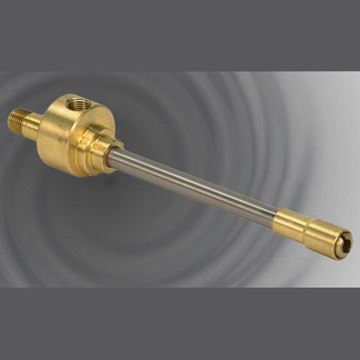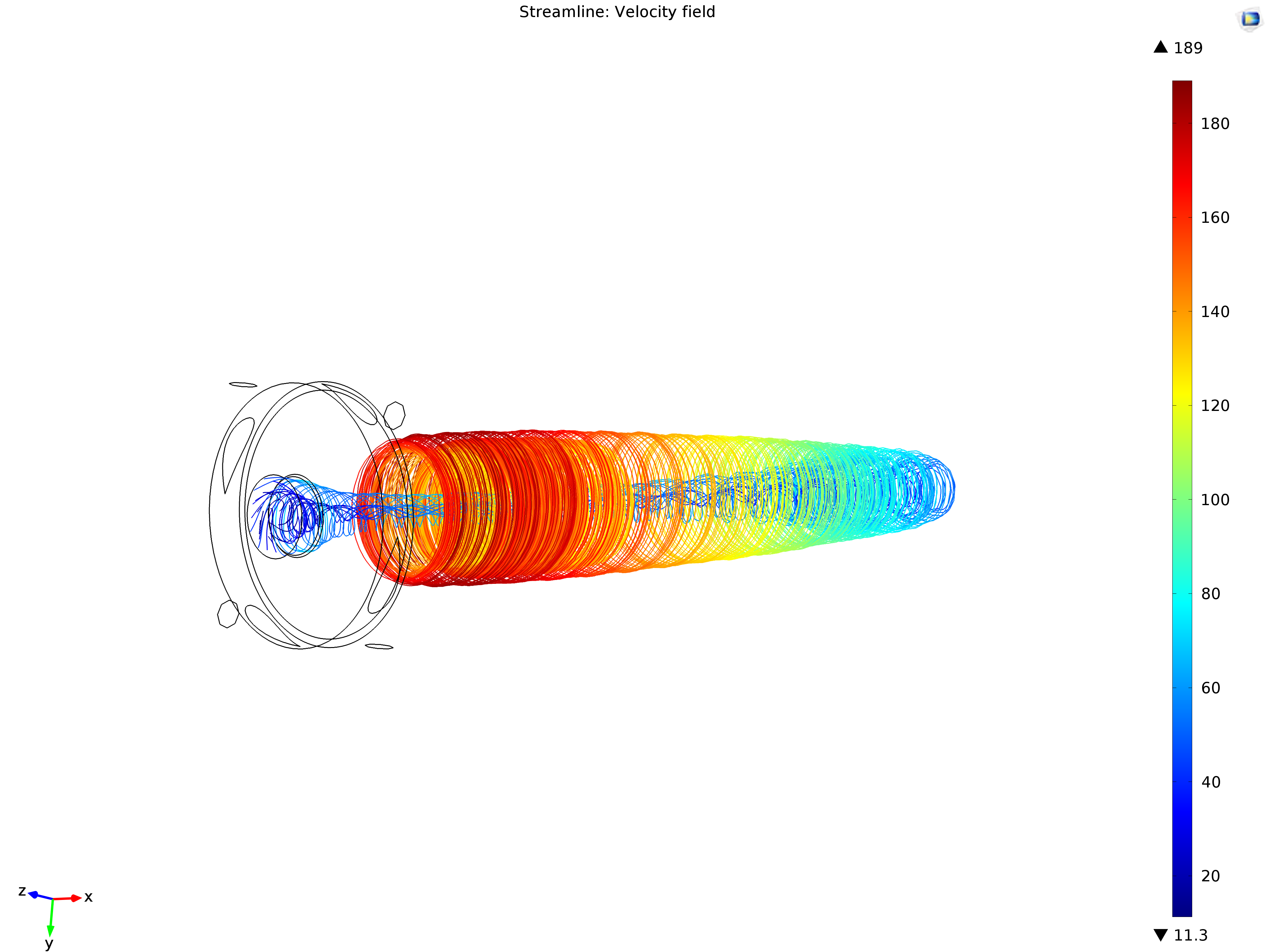He didn’t have access to modern day computers. A lot of research is in progress and you may wonder how they work. Good news! You can build one in your home with some hardware store parts. Here is an instructable on How to build a Vortex tube in your own home!
My undergraduate research project is on the computational modeling of the vortex tube. The long term goal of determining the most important geometric parameters. It is also important to determine how each of these factors into various fluids, specifically hydrogen. With patented technology the plan is to use the vortex tube in a modified Claude cycle to reduce the cost of liquefying hydrogen.
Working away on CFD modeling is a learning process with many nuances to every set of software. Comsol is not without exceptions. As a result of compounding the experience using Comsol Multiphysics, I am finally able to start getting results. This is to accomplish the goal of modeling the vortex tube to show the effects of different geometry in the vortex tube.
Phase 1 is to model a real life vortex tube to relate computational results to physical ones. In the HYPER lab we currently have a small commercial vortex tube from Vortec this model is based on.
Elijah will run an experiment with CHEF to learn more about the molecular separation mechanism with this device. There are high hopes this will unveil more understanding about the vortex tube by utilizing the orthohydrogen/parahydrogen spin flip properties. The CFD modeling has yielded some impressive visuals to assist in the understanding of how this device operates.
Currently I have been able to reach a solution with a cold mass fraction of 0.043 and 0.069 (0.043 shown). The first Image is the velocity streamlines with the temperature in kelvin represented by the color scheme. While the second image represents the streamline velocities in m/s on the color scale.
Temperature (K)
Velocity (m/s)
By varying the Hot outlet boundary condition pressure as is commonly done, we are not required to create a new mesh. This will assist in modeling through several iterations in a shorter duration. The limiting factor in these simulations is needing to refine the specific region between the cold and hot streams where they are traveling opposite directions. Given a little trial and error with refining the mesh in that error we should have more results soon!

